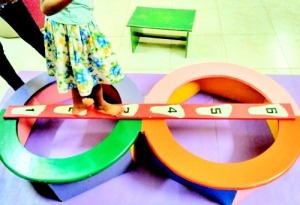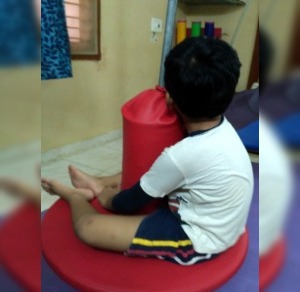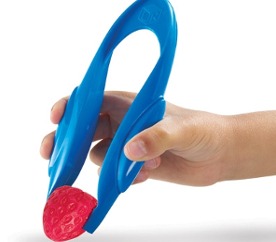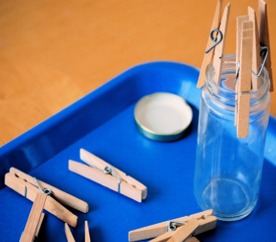Occupational Therapy
Occupational Therapy Intervention (OT)
Children with developmental delays are often present with MILESTONE delays (skills underachieved for his/her age) and deficits that can lead to an occupational therapy evaluation. The best occuptional therapy centre, Some of those delays are in fine motor skills, gross motor skills, sensory processing abilities, balance and coordination, weakened core, poor postural control, and delays in self-care tasks as well as school-related tasks, all of which can be addressed during an occupational therapy session.

- Colouring
- Pasting
- Stringing beads
- Stringing beads
- Pointing
- Scissor cutting
- Cupping hands
- Lacing
- Zipping
- Buttoning
- Writing
- Poor pencil grip
- Make out balls with clay
- Tweezers usage
- Picking up flat coins from floor
- Finger games
Motor Sequence
When to seek help:
- Lacking in generalizing learned skills in new situations
- They make seek extra practice and reinforcement when learning new skills
- Frustrated with activities that challenge motor skills
- Problems with learning new skills that involve body movements
- Repeat the same movement over and over
Bilateral Motor Coordination (right/ left)
- (Cognitive awareness of certain spatial concepts, especially of right and left)
- Scissor Cutting: Consider the bilateral skill that is involved in an activity such as cutting out a circle. The dominant hand grasps the scissors and makes the repetitive opening and closing movements that are involved in cutting. The non-dominant hand holds the paper.
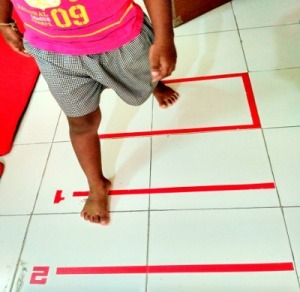
Crossing the midline activity:
- Changing positions quickly and when you observe the child’s ability to imitate can provide good clues about this skill. For example, putting your left hand over your right ear
- Jumping: Difficulty in jumping to “patterns” on a trampoline (e.g. right, left, left or right, left, clap, right, left, clap).
Visual Motor Integration:
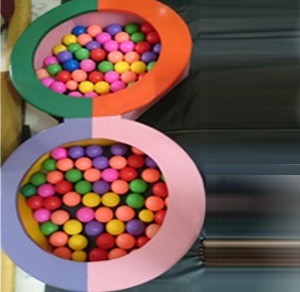
How it can be identified? Child has difficulty
- In cutting along a line with scissors
- In coloring within lines
- In drawing
- In learning letter formation
- In spacing, staying within lines, consistent sizing of writing
- In Copying from book to paper, or board to paper
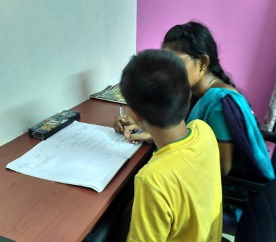
Occupational Therapy/Treatment Intervention:
How OT helps ?
Best Occupational Therapy Centre In Chennai, Occupational Therapist is using play type activities to bring a change in how the child’s brain reacts to touch, sound, sight and movement. Later, introduced with new textures and challenge sensory systems with a variety of selected sensory games.
The therapist follows kids’ interests and lets them pick the games, but always grade the activity to make sure kids making progress towards goals.
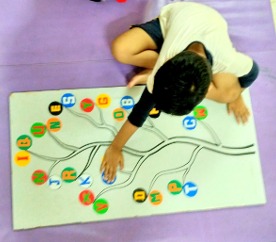
The therapist makes sure the game is the “just right challenge” for their skills.
Begins a therapy session by first providing sensory experiences that help the child to be more aware of body sensations or that offer vestibular or tactile sensation. This helps the child to be ready to “listen” to his or her body.
Verbal prompt works out well verbalize each step of the process as a reminder to their body.
Performing activities with the eyes closed can help to increase awareness of the feel of body movements.
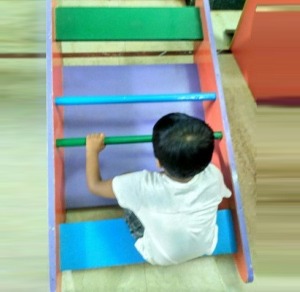
Therapy strategies for Visual Motor Integration:
Break down the activity into observation/planning/execution.
Provide tactile, visual or auditory cues to help guide movements,e.g. increase the width of the line to be cut or size of space to be coloured.
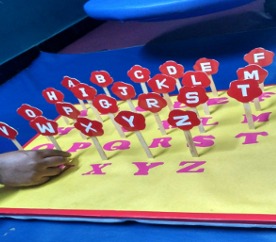
Therapy strategies to improve tactile discrimination:
Less challenging textures and building from this to allow the child to control the level of contact and stop when she needs to. For children who are less aware of touch and maybe touch seeking, there is a need to help develop discriminative ability.
Encourage the child to explore different textures on his skin, e.g. paint brushes, liquid soap.
Dress up in different clothing, e.g. silk, fur.
Play with different textured objects and ask the child to identify different features, e.g. hard/soft
Feely box – hide objects in rice/sand/ and ask the child to find them.
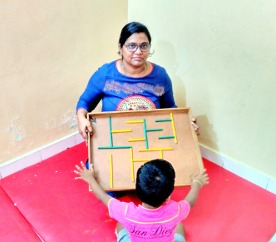
Therapy strategies for sensation avoiding
Prepare the child in advance of changes in position; break down the task into achievable steps.
Grade the activity to build up the child’s tolerance of movement gradually.
Allow the children to lead the activity at their own pace to prevent adverse reactions.
Therapy strategies for sensation seeking
- Incorporate movement activities into the child’s daily life, e.g. trampoline jumping, running.
- Give the child regular movement breaks throughout the day.
- Allow the child to regularly change position (floor sitting, sitting on a chair, standing, lying on the floor, kneeling)
- Activities that require rapid anticipation of movement also help to teach motor planning.
- Start with slow, rhythmic movements and gradually increase the speed and postural demands.
- Jump over Trampoline.
- Swing Play.
- Slide play.
- Balance board activities.
It’s who we are and it’s what we believe in.
